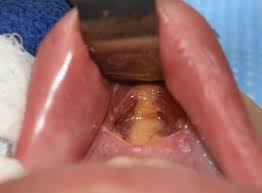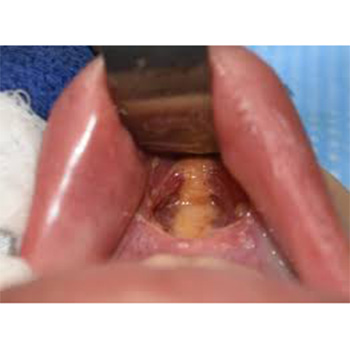The mentalis muscle is the dominant muscle of the chin. It runs vertically from under the lip down across the bottom of the chin into the anterior neck region. It is almost always visualized and illustrated as a single sheet of muscle that covers the entire chin area. Its action is to contract the soft tissue chin pad vertically. It is an interesting facial muscle because it does not create a dominant expression. Asking someone to activate their mentalis muscle is interesting because most can’t do it in isolation. But yet when its action is adversely affected patients can spot it immediately as abnormalities in shape across the soft tissue chin pad.
The mentalis muscle is appreciated surgically because it must be crossed in some fashion in all forms of chin surgery whether it is an intraoral mucosal or external skin incisional approach. Coming intraorally the origin of the muscle must be traversed in its entirety and then reattached during closure. From a submental approach some of the insertion of the muscle into the upper soft tissue of the neck is crossed. While it is always put back together as a deep layer during closure, its function would undoubtably be less affected if it were not.

The relevance in chin surgery of this anatomy is that with an intraoral closure it will take more than midline suturing to properly re-establish the mentalis muscle origin.
Dr. Barry Eppley
Indianapolis, Indiana



